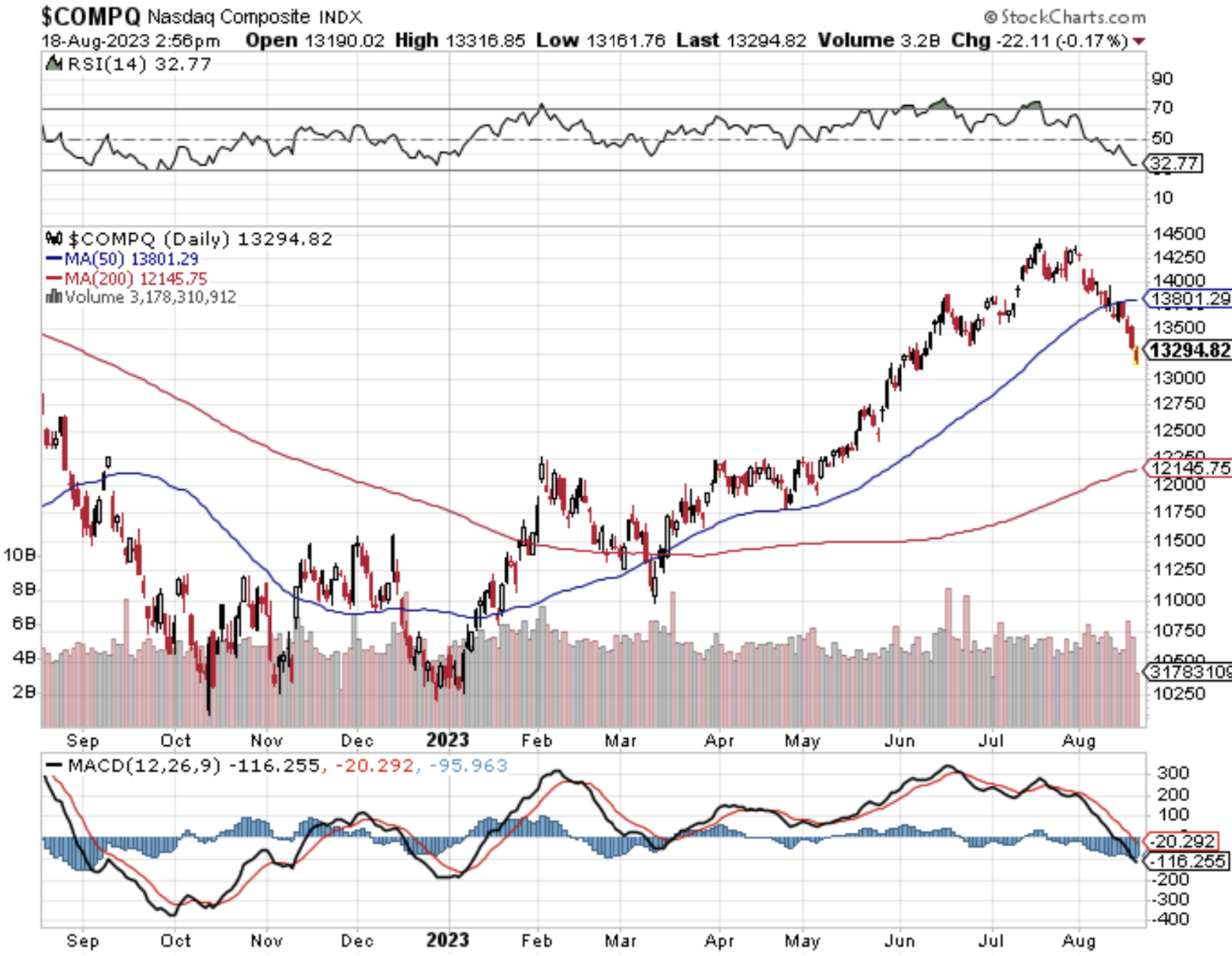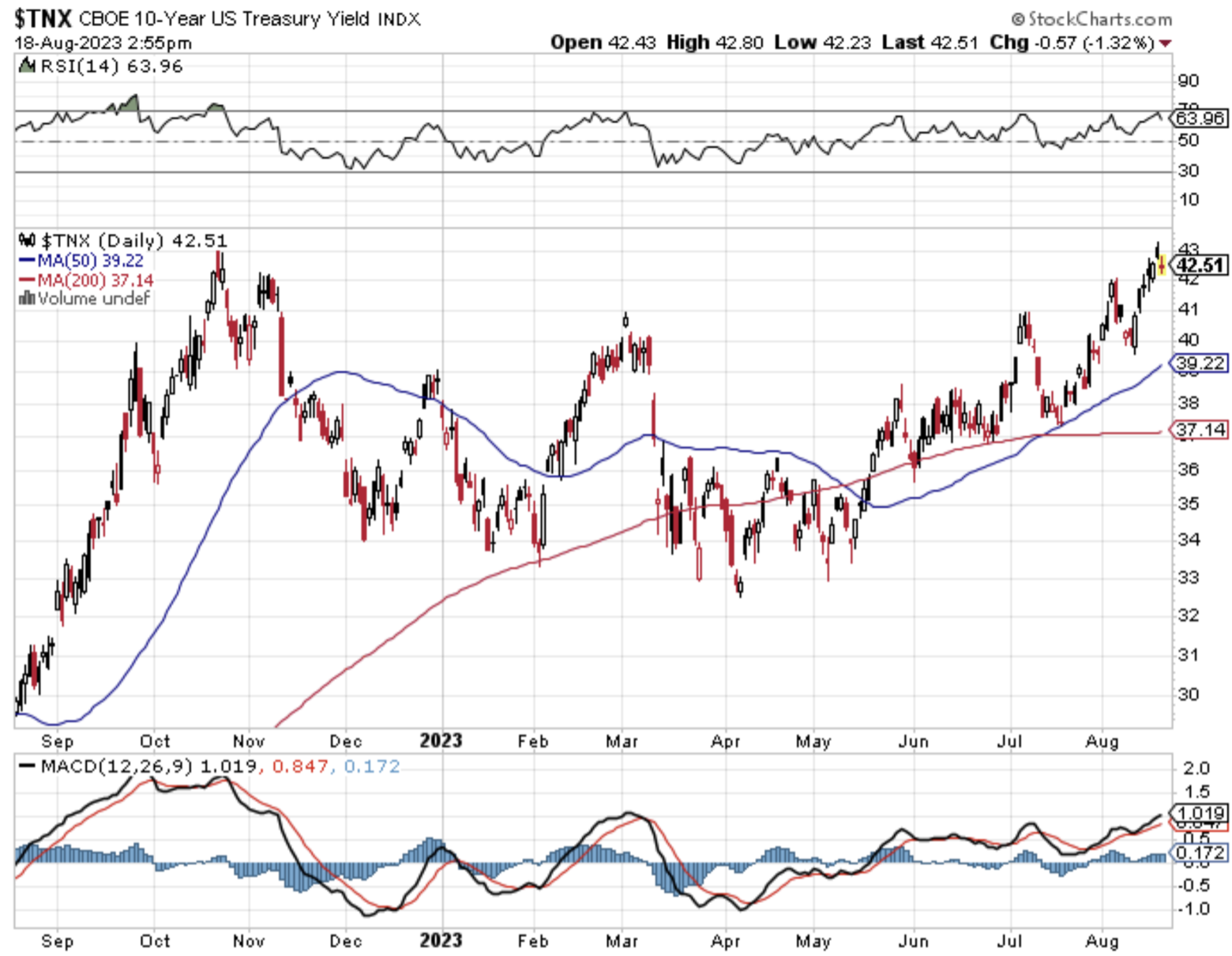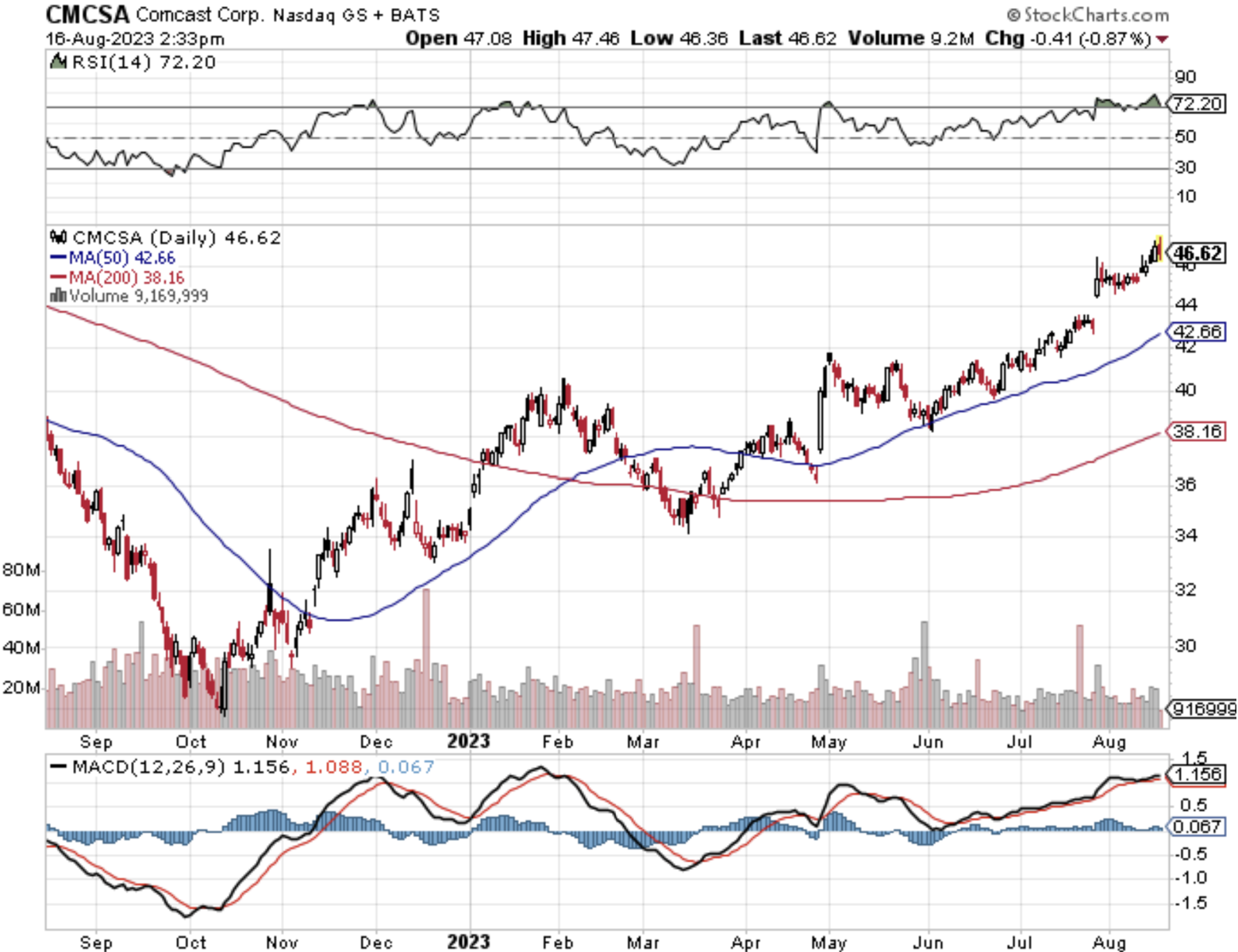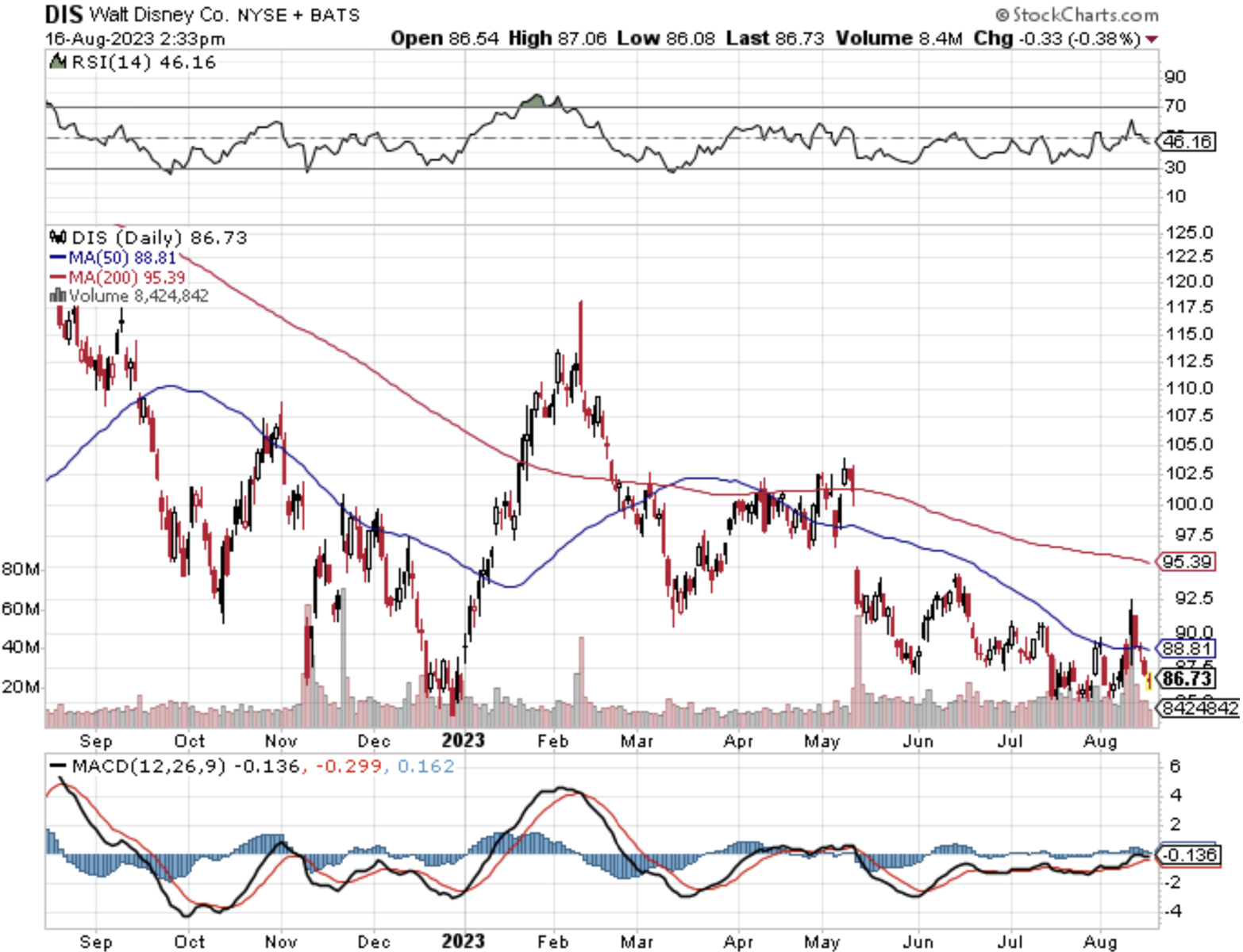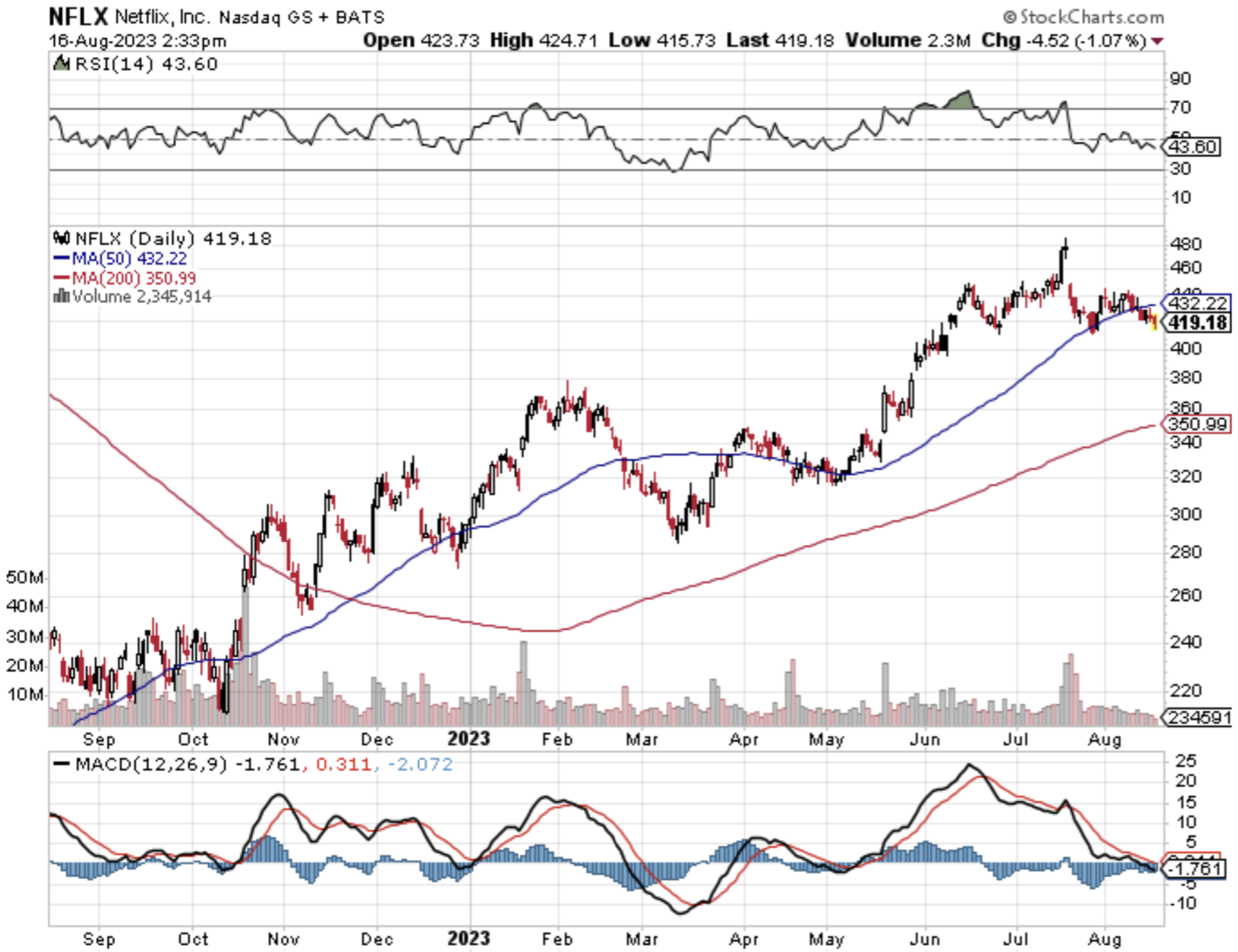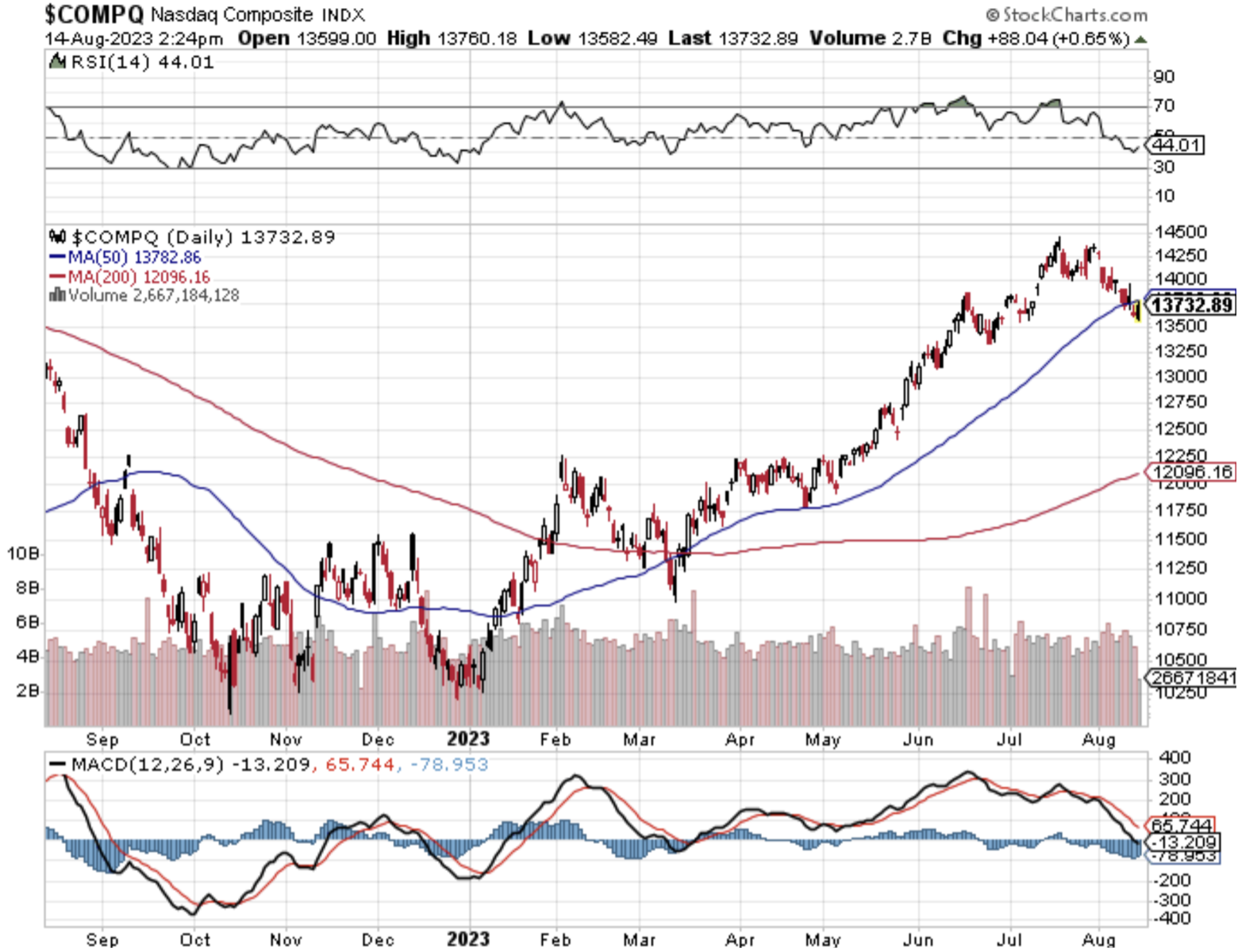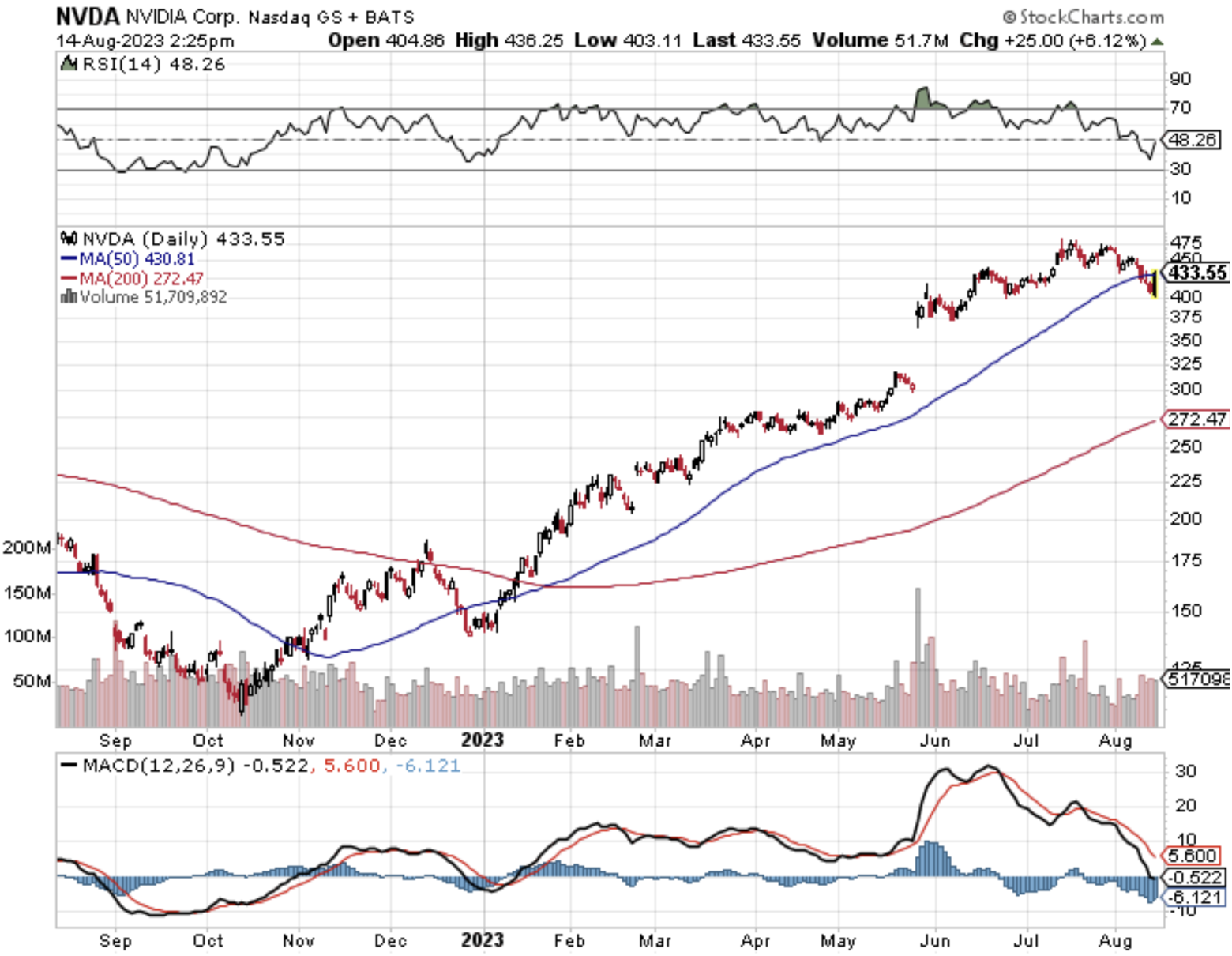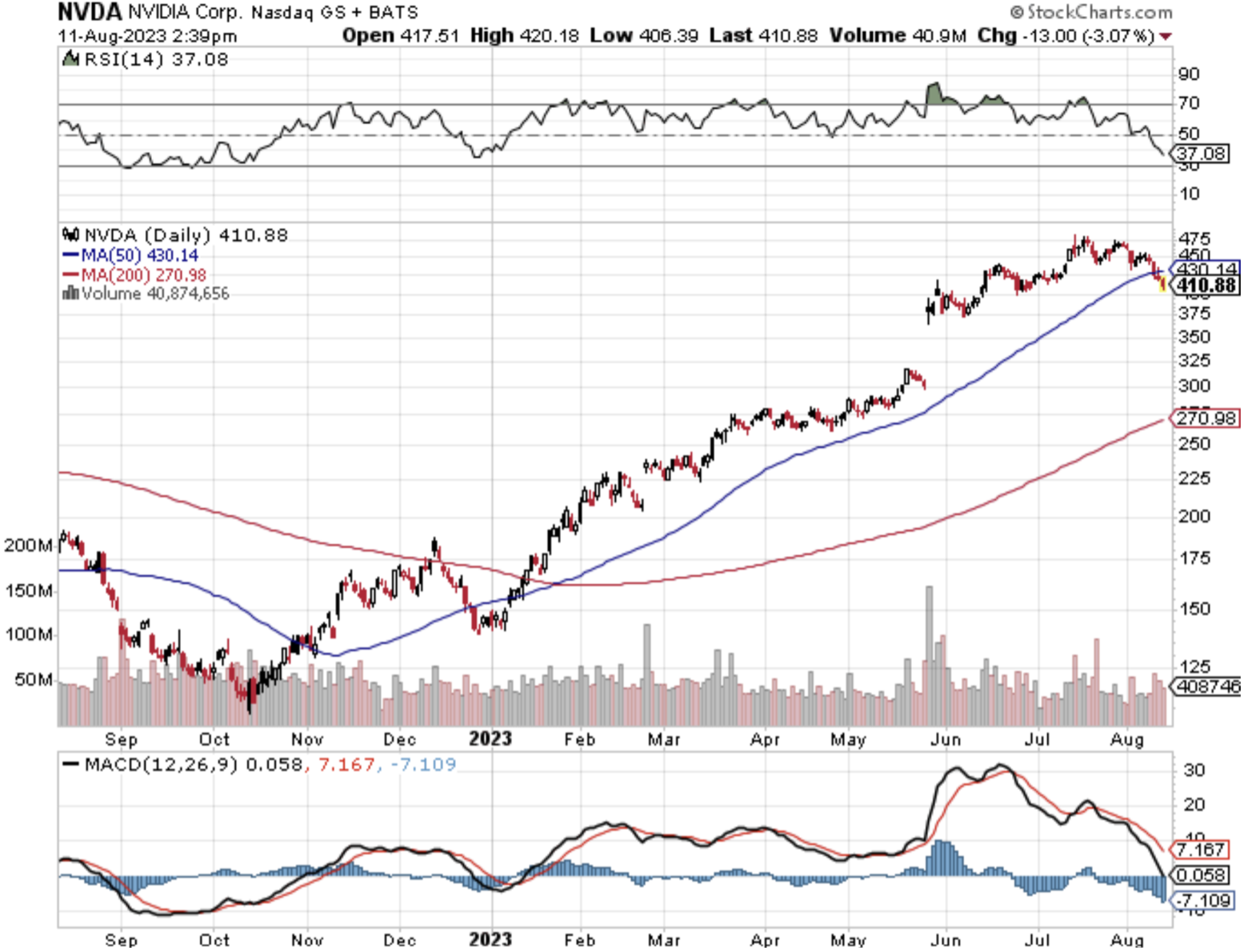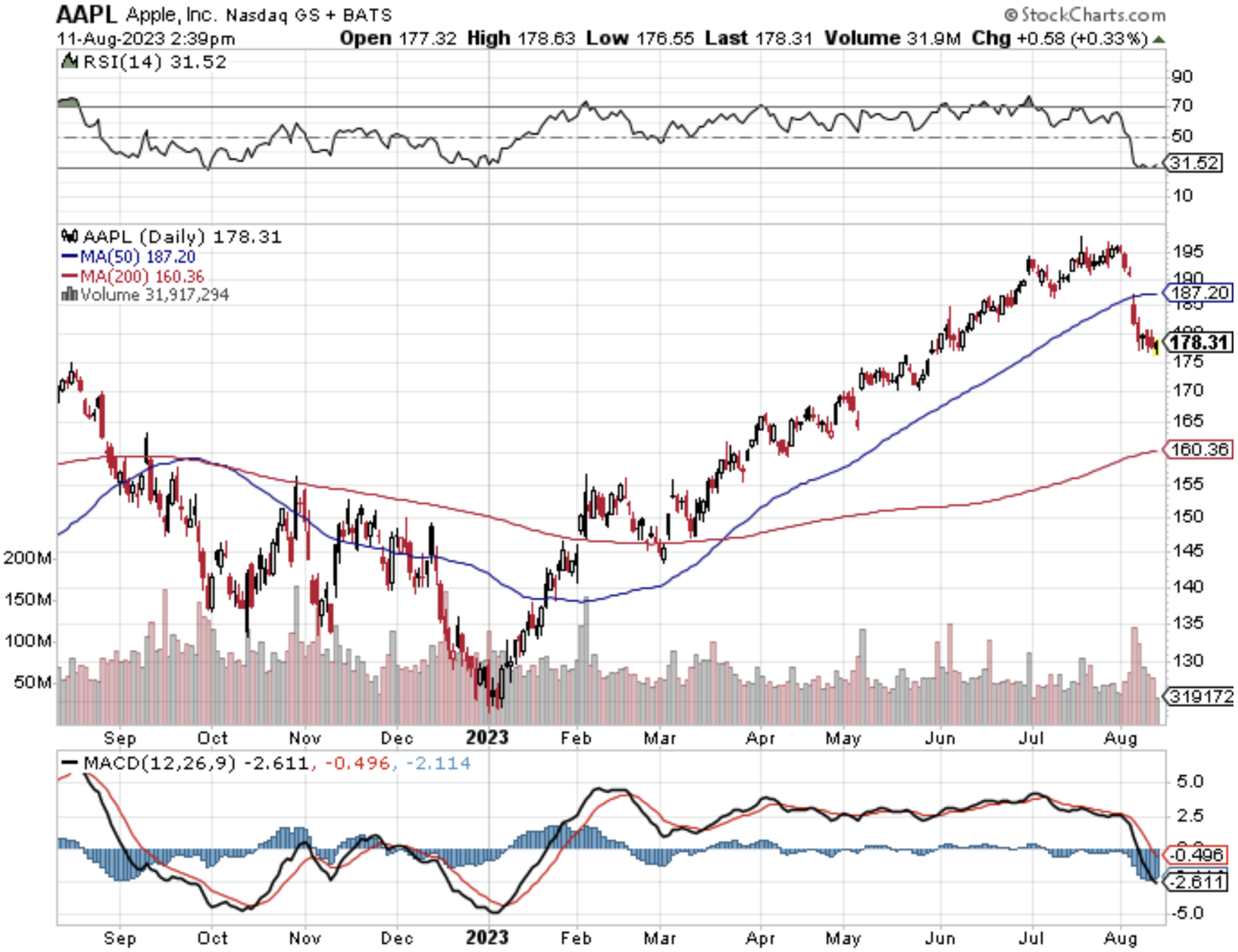The U.S. 10-year Treasury bond ($TNX) has surged past the October 2022 high so what does that mean for tech stocks ($COMPQ)?
In short term, tech shares will be held back.
Tech stocks are the most exposed to collateral damage from surging interest rates because of the growth nature of the sector.
Funnily enough, much of this 2023 rally has been fueled by the notion of a Fed “pivot” coming down the pipeline.
It still hasn’t come, but now the pendulum has swung the other way and tech shares, even the biggest and best, and getting brutalized.
The people short tech stocks in 2023 couldn’t have been more wrong even if betting against the Fed doesn’t usually work.
Now, the inverse of the Fed pivot is taking place as the U.S. 10-year Treasury bond has hit highs of 4.32% demolishing last years’ peak.
Technically, once recent highs shatter, it is common for set algorithms to motion another wave of money to continue the trend.
The trend for yields is now higher.
It’s highly plausible that this bull market in bond yields picks up and pushes to 5%.
Why is this happening?
The surprisingly resilient US economy has meant the job market is on fire. Tech companies have become leaner, but have abstained from mass firings.
Also, Americans are spending like there is no tomorrow which has kept stocks going up for most of the year and the latest earnings season reinforces this trend.
The result will mean that inflation could remain stubbornly above the Fed’s target, leaving room for long-term yields to push even higher.
There is a remarkable repricing higher in longer-term rates and many traders have been caught off guard.
The market is coming more to the view that there is going to be long-term inflation pressures despite recent progress.
Macro uncertainty is going to remain the story for the next few years, and that requires greater compensation to own long-dated bonds.
But many now expect a soft landing that would leave inflation the dominant risk.
For much of the year, the market worked its way towards a hard landing/Fed pivot scenario which factors in lower inflation. Now the opposite is happening.
Broader economic shifts are also driving speculation that the low rates — and inflation — of the post-crisis period were an anomaly. Among them: surging wage costs, deglobalization, and corporates padding their net margins.
The U.S. is drowning in its own federal debt but must issue more to service the interest on this debt meaning the purchasing power in the United States is crashing.
The net net of this is very negative for technology stocks and it’s a tough pill to swallow after benefiting from the AI bubble and Fed pivot narrative for the first 7 months of the year.
It’s difficult to see another burst of hot money pouring into tech stocks for the rest of 2023.
If we are stuck with the soft landing and the higher for longer narrative, then markets will bid up higher inflation which will suppress tech stocks.
That is what the 4.33% in the 10-year is telling us and tech stocks in the near term will be negatively correlated with this yield moving into the last 3 months of the year.

